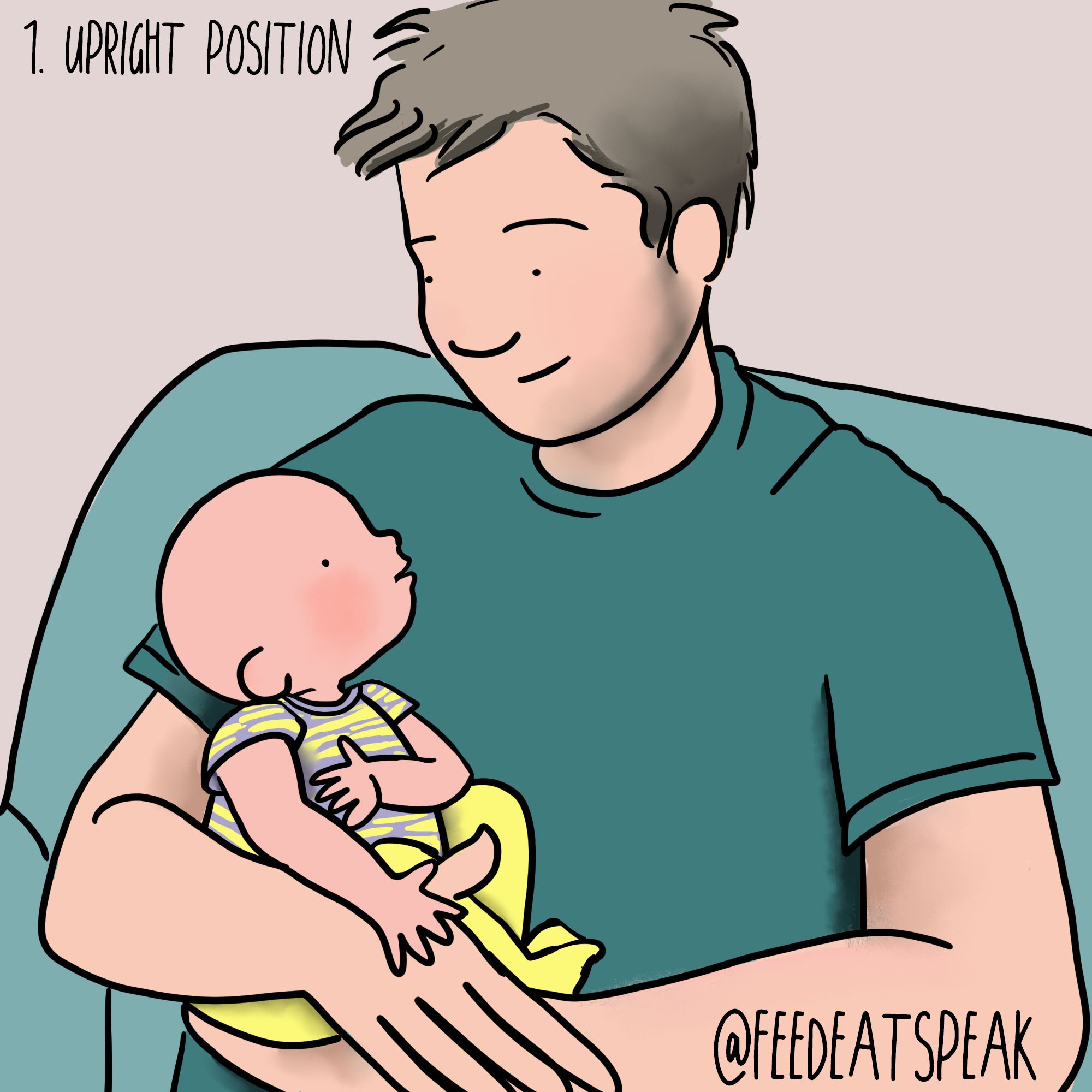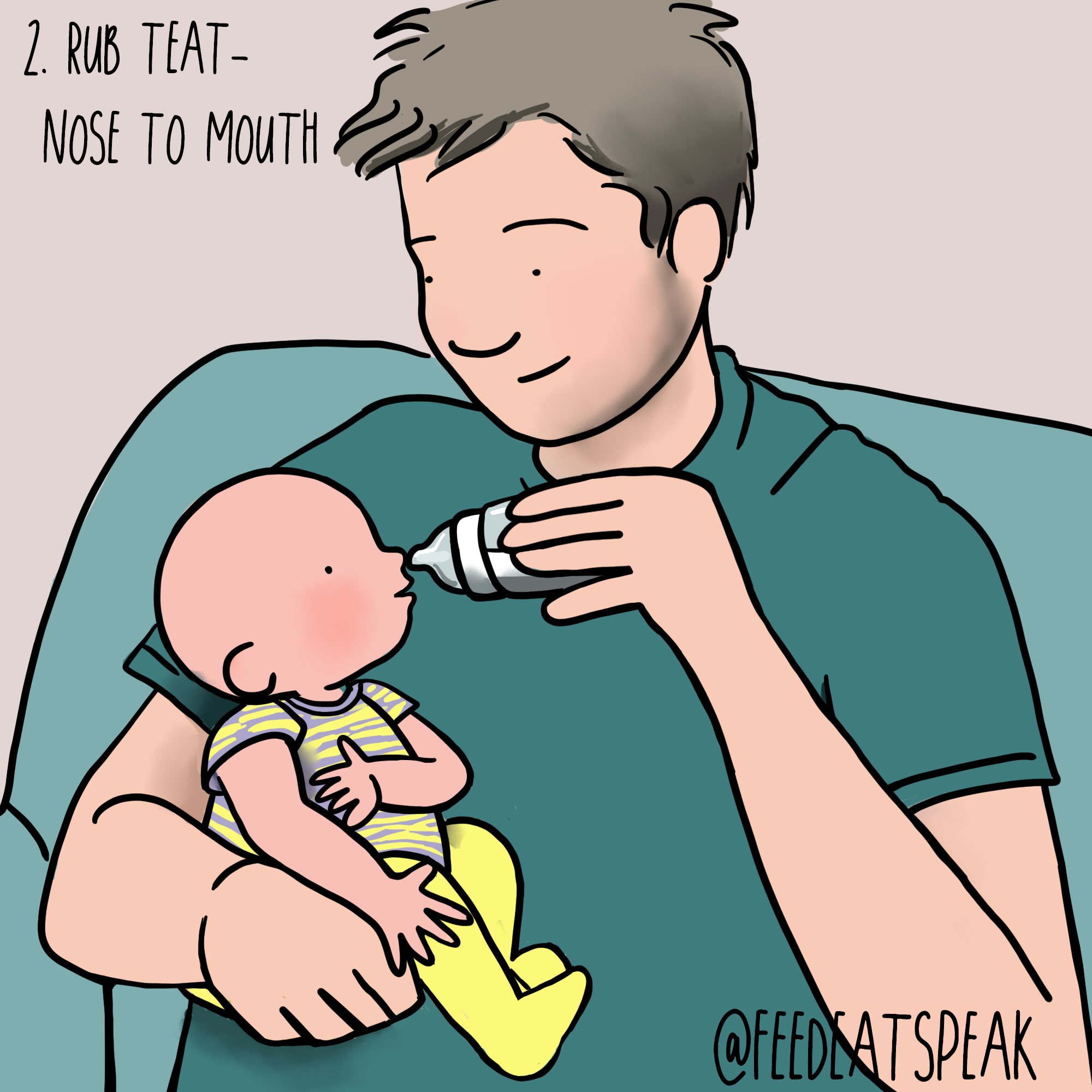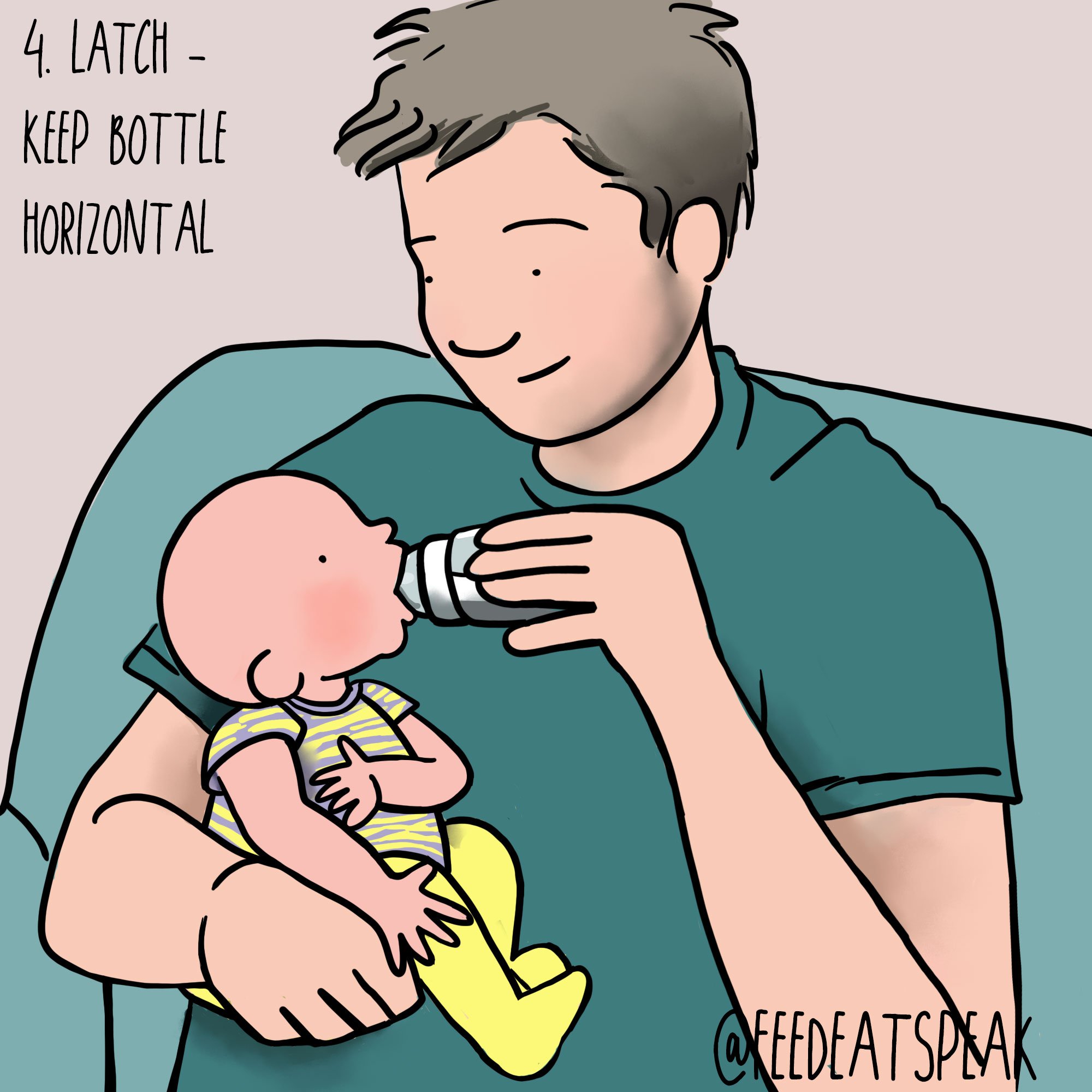Bottle feeding a breastfed baby
If you have been reading my blog for a while you will know that I support all families and all feeding choices and this blog is no exception. It is written from a place of education rather than judgement with the aim that you can make informed choices and execute them so that they work for you and your little people.
Offering a bottle to breastfeeding baby may influence their breastfeeding.
This is not to say that you shouldn’t offer bottles if you want, nor that every baby who is bottle fed go on to develop challenges with breastfeeding. However, I do want to share this information you can introduce bottles in the most protective way in order to continue to breastfeed your baby in the way you want to!
What happens when you give a breastfed baby a bottle?
Breast and bottle feeding are different. This is why many breastfed babies won’t even take a bottle. The way the milk flows is different as well as the way that your baby sucks the milk. As a result of these differences, it is possible that your baby may develop a preference to the way that milk flows from the bottle. When given a bottle, milk flows immediately and depending on the size of the teat often it flows very quickly, so babies can very easily become accustomed to the immediacy and speed in which they receive milk.
How can I stop my baby developing a preference to the bottle?
Paced bottle feeding is one of the ways you can help prevent your baby from developing a preference to the bottle.
How to do paced bottle feeding...
1. Select a slow flow or newborn teat. Hold the baby in an upright position
2. Rub the bottle teat down from your baby's nose
3. Wait for your baby to open its mouth wide and latch on to the teat like they would latch to the breast
4. Put the full teat in the baby's mouth
do not tip the bottle up and fill the teat with milk. Instead hold it horizontal so that the teat is half full. They may swallow some air but it will come up when you wind them
5. Dip the bottle down or remove the teat after every 20-30 seconds and give your baby a pause, lift it back to horizontal when your baby starts sucking again. Repeat throughout the feed.
End the feed when your baby shows you signs that they are finished, regardless of how much milk is left in the bottle
When can I start to offer my breastfed baby a bottle?
The ideal timing of introduction of bottles to breastfed babies is unclear as is its influence on later bottle acceptance. In my experience it may be different for different mothers and babies and it is dependent on a number of factors. The most significant factors in earlier introduction of bottles is due to breastfeeding challenges (in which case it can’t be avoided) or mothers needing their small baby to take a bottle in order for them to be able to leave them to return to work. In an ideal situation where there isn’t a time pressure then I would usually suggest waiting a few weeks whilst you and your baby learn how to breastfeed. When you are at a point that your baby is able to latch and attach well at the breast and you don’t feel any pain and they are gaining weight well from breastfeeding at the breast, then you are in a good position to get started. At the same time, if you are planning to pump and offer your baby your breastmilk then I would advise waiting until your breastmilk supply has ‘settled’ post birth and you are no longer experiencing engorgement or any oversupply.
How can bottle feeding impact on breastfeeding?
If your baby develops a preference for bottles, the greatest risk would be breast refusal. This can often lead to a vicious cycle whereby your baby refuses or becomes fussier at the breast due to a bottle preference, you worry that they are not taking enough milk and then offer more bottles. In fact, if you do feel that your baby may be developing a bottle preference, I would suggest less bottles and more skin to skin and responsive breastfeeding to redress the balance.
Another, lesser discussed impact of bottle feeding on breastfeeding is that it can turn your attention to volumes. When you bottle feed, you can see the volumes of milk your baby drinks and it can be easy, whilst navigating through breastfeeding to find yourself second guessing yourself and your baby. For example, worrying that baby is not feeding for long enough to get the same amount of milk as they do in the bottle or is feeding too frequently or that fussy behaviour may mean they are still hungry.
Having access to bottles may make you more likely to give a bottle to address these perceived issues and in doing that you reduce time spent at the breast and increase the number of bottles which makes bottle preference more likely and may also impact your supply.
Changes in your baby’s general feeding behaviours and behaviours at the breast through the first six months are to be expected. It is important to arm your-self with good quality information for what to expect on your breastfeeding journey.
Can bottle feeding affect my milk production?
By offering a bottle you miss a feed. It is important to stimulate the breasts throughout the day and not doing this could leave you feeling full, engorged or uncomfortable. Not expressing will also down-regulate your milk supply and could reduce available milk for your baby. It is important to respond to your body by hand expressing or pumping if needed. If you are uncomfortable or engorged and ignore this, you risk getting milk stasis which can cause blocked ducts or in some cases mastitis.
How can I reduce the chance of my baby developing a bottle preference?
It is likely that the more bottles your baby receives the more likely they are to develop a preference for them. Ensure you factor this in when making your feeding choices. Make sure that all carers feeding your baby are aware of the paced bottle-feeding technique and practice this, including using a slow flow teat for all feeds.
Now that you are aware of the potential impact of bottle feeding your breastfed baby you are able to make an informed choice about how often and what techniques and teats you use when feeding your baby






